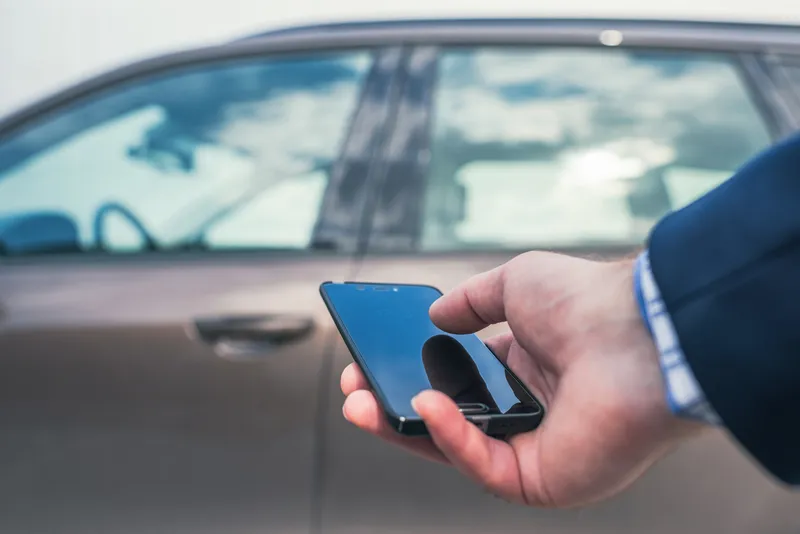A new app that connects a vehicle’s systems to the internet opens up a range of possibilities as Jon Masters discovers.
Sometimes the most straightforward or simple of ideas can be the most significant. So it seems with the latest development from Hungarian navigation software supplier NNG. The company’s software features in-vehicle infotainment systems and has launched NavFusion – which connects a vehicles’ sat nav programs to smartphones.
NavFusion is being incorporated into NNG’s iGO navigation s
November 28, 2013
Read time: 4 mins

A new app that connects a vehicle’s systems to the internet opens up a range of possibilities as Jon Masters discovers.
Sometimes the most straightforward or simple of ideas can be the most significant. So it seems with the latest development from Hungarian navigation software supplier7430 NNG. The company’s software features in-vehicle infotainment systems and has launched NavFusion – which connects a vehicles’ sat nav programs to smartphones.
NavFusion is being incorporated into NNG’s iGO navigation software to get it into vehicles’ infotainment systems from early next year. It will come with a smartphone app useable as a stand-alone navigation tool when outside of the car but the main aim is to give easy access to internet map updates through the smart phone.
At a stroke, NNG appears to have solved a significant problem for drivers and OEMs. The firm’s senior vice president for automotive sales is Jim Nardulli. He says: “A United States JD Power consumer survey has found that the number one complaint about vehicle infotainment systems is the difficulty experienced with updating navigation maps. It is usually both difficult and expensive to get map updates. We have arrived at a simple solution that will allow it to become cheaper and easier.”
The NavFusion app will be available for Android and iOS Smart- phones and can be made available for other formats, Nardulli says. Its introduction seems so simple, it begs the question, why has nobody done it before?
“A couple of things have come together to get us to this point,” Nardulli says. “We have seen a lot of companies trying to make a business out of connecting cars in various ways. Engineers have been tending to get too excited about what they can do, rather than thinking what they should do. They look to develop proprietary products that lock OEM’s and consumers in. NNG looks to create open technology that does not create a proprietary lock.
“People’s lives are increasingly digital and based around the smartphone and they spend a lot of time in their cars, particularly so in America. All of this struck us as we considered how people spend their days. Navigation systems have become a standard feature in the car and the maps increasingly need to be kept fresh. It’s possible to provide a free or low cost app for updates to the smartphone so why not combine the two and make a similar feature for the navigation of the infotainment system as well?”
NNG expects others to follow its lead while hoping its head start, and a significant market share of the factory fit navigation business, will propel NavFusion to the forefront. “There is no need to produce something proprietary here. The emphasis is on making this software simple, open and easy to understand. We measure success on the basis of how many people’s lives we impact,” Nardulli says.
Nonetheless, NavFusion has been two years in the making and NNG could have a head start of that magnitude on its competitors. It work with Tier-1 infotainment suppliers such as6328 Harman, Clarion, Pioneer and FujitsuTen and according to Nardulli, it supplied 26% of the global automotive infotainment market in 2013, excluding China and Japan. “Our expectation is to be supplying 40% of the market available worldwide by 2014,” Nardulli says.
The industry’s response to NavFusion so far has been overwhelming, says Nardulli. “Vehicle manufacturers have absolutely jumped on this. They can see the simplicity of it and will control what information gets in and out of the vehicle,” he says.
The NavFusion car/smartphone connection could allow drivers to receive all manner of traffic, weather and news or event information to aid their route selection. It could also provide a very useful link to allow more cars to become data sources for traffic management and travel information.
“A number of possibilities can be foreseen, such as communication of VRM (vehicle relationship management) between the car and the dealership. Every device can benefit from being connected to the internet, but we are not dictating how that will unfold. We’re just enabling it to happen,” Nardulli says. “The OEMs will control what data can get in and out of the car and how it is managed for reasons of safety and security. Whatever OEMs want, we will advise how it can be done, but most importantly we will aim to keep vehicles connected and updated.”
Sometimes the most straightforward or simple of ideas can be the most significant. So it seems with the latest development from Hungarian navigation software supplier
NavFusion is being incorporated into NNG’s iGO navigation software to get it into vehicles’ infotainment systems from early next year. It will come with a smartphone app useable as a stand-alone navigation tool when outside of the car but the main aim is to give easy access to internet map updates through the smart phone.
At a stroke, NNG appears to have solved a significant problem for drivers and OEMs. The firm’s senior vice president for automotive sales is Jim Nardulli. He says: “A United States JD Power consumer survey has found that the number one complaint about vehicle infotainment systems is the difficulty experienced with updating navigation maps. It is usually both difficult and expensive to get map updates. We have arrived at a simple solution that will allow it to become cheaper and easier.”
The NavFusion app will be available for Android and iOS Smart- phones and can be made available for other formats, Nardulli says. Its introduction seems so simple, it begs the question, why has nobody done it before?
“A couple of things have come together to get us to this point,” Nardulli says. “We have seen a lot of companies trying to make a business out of connecting cars in various ways. Engineers have been tending to get too excited about what they can do, rather than thinking what they should do. They look to develop proprietary products that lock OEM’s and consumers in. NNG looks to create open technology that does not create a proprietary lock.
“People’s lives are increasingly digital and based around the smartphone and they spend a lot of time in their cars, particularly so in America. All of this struck us as we considered how people spend their days. Navigation systems have become a standard feature in the car and the maps increasingly need to be kept fresh. It’s possible to provide a free or low cost app for updates to the smartphone so why not combine the two and make a similar feature for the navigation of the infotainment system as well?”
NNG expects others to follow its lead while hoping its head start, and a significant market share of the factory fit navigation business, will propel NavFusion to the forefront. “There is no need to produce something proprietary here. The emphasis is on making this software simple, open and easy to understand. We measure success on the basis of how many people’s lives we impact,” Nardulli says.
Nonetheless, NavFusion has been two years in the making and NNG could have a head start of that magnitude on its competitors. It work with Tier-1 infotainment suppliers such as
The industry’s response to NavFusion so far has been overwhelming, says Nardulli. “Vehicle manufacturers have absolutely jumped on this. They can see the simplicity of it and will control what information gets in and out of the vehicle,” he says.
The NavFusion car/smartphone connection could allow drivers to receive all manner of traffic, weather and news or event information to aid their route selection. It could also provide a very useful link to allow more cars to become data sources for traffic management and travel information.
“A number of possibilities can be foreseen, such as communication of VRM (vehicle relationship management) between the car and the dealership. Every device can benefit from being connected to the internet, but we are not dictating how that will unfold. We’re just enabling it to happen,” Nardulli says. “The OEMs will control what data can get in and out of the car and how it is managed for reasons of safety and security. Whatever OEMs want, we will advise how it can be done, but most importantly we will aim to keep vehicles connected and updated.”









